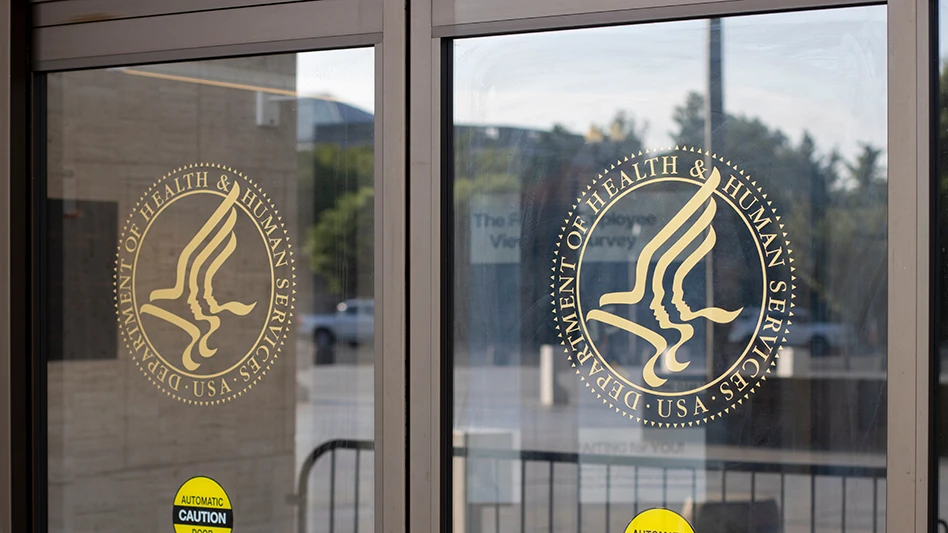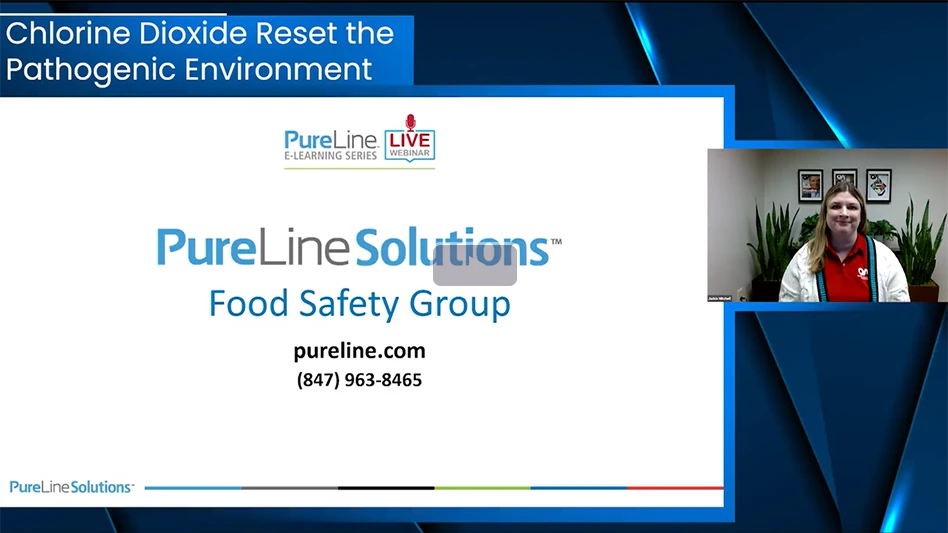What did 2006 mean to you and the food quality, safety and defense initiatives in your plant? What should you be doing about the world events and trends which had such impact on the industry this year?
From Avian flu scares to E. coli-based recalls; from trans fat labeling to city-mandated bans; from traceability to allergen "common language," 2006 issues both within and outside the food-processing industry have caused food plants to take action and make changes on a wide range of programs and processes. To ensure you have stayed updated on the most critical happenings, it is beneficial for your plant to take some time as the year ends and the new year begins to conduct informal self reviews – or add a few steps to your annual HACCP reassessment, particularly focused on these areas.
Key trends impacting the industry in 2006, many of which are extending into 2007, include:
ALLERGEN LABELING. With approximately two percent of adults and up to eight percent of children experiencing true food allergies, as estimated by the Minnesota Department of Agriculture (MDA), and this percentage seeming to increase on an almost annual basis, the food industry was bound to feel repercussions. Though it was enacted in 2004, labeling requirements of the Food Allergen Labeling and Consumer Protection Act (FALCPA) became effective with food labeled on or after January 1, 2006. According to FALCPA, products containing milk, egg, fish, crustacean shellfish, tree nuts, wheat, peanuts or soybeans must be clearly and specifically labeled in common language that is easily recognized by consumers.
While such labeling has become routine during the past year, there are still areas which plants should review regularly, such as two common causes of allergen recalls:
Suppliers/Incoming goods — Although its advice was primarily directed toward retail food establishments, MDA’s words of caution to suppliers are just as valid for food processors: "Obtain a fully disclosed ingredient list from the supplier including details on sub-ingredients."
Protect raw ingredients in storage to prevent contamination
Label raw material to indicate allergen content
Be careful when substituting raw materials. (Does the substitution material have the same allergen profile as the original material?)
As a part of your year-end review, the aforementioned items should also be rechecked and confirmed as up-to-date and accurate. For example, you should ask your suppliers if there have been any changes in formulation or ingredients. While you may expect suppliers to keep you informed of such changes, this often is a cause of allergen label inconsistencies. Take, for example, the plant that had used the same supplier and ingredients for a number of years, only to have the product recalled for unlabeled allergens — with the allergen then traced back to that supplier. "It probably went way back in time," says USDA/FSIS Assistant Administrator for the Office of Field Operations Dr. Kenneth Petersen. "At some point they figured out it had an allergen in it." Don’t let a recall be the "figuring out" point for your product.
Cross contamination — This issue contains two sanitation-related articles which focus on preventing foodborne disease and reducing the potential of cross contamination. For a review of steps food plants can take, see Sanitation: An Eight-Step Approach (pg. 50) and Design Strategies for Preventing Cross Contamination (pg. 56).
TRANS FAT
Another 2006 labeling initiative involved trans fats, an area which seemed to be settling into routine but recently gained a new focus with the New York City proposal, and subsequent unanimous passage of a ban on trans fats in restaurant foods.
In 2005 the city’s Department of Health and Mental Hygiene (DOHMH) began an educational initiative asking city restaurateurs and food suppliers to voluntarily eliminate partially hydrogenated vegetable oils from the kitchen. In September 2006, declaring that artificial trans fat is still widely used in restaurants despite the year-long education campaign, DOHMH went the next step, initiating a proposal to phase out artificial trans fat from New York City restaurants. In early December the board passed the vote, requiring that all NYC restaurants remove artificial trans fat over the next 18 months.
During the campaign, information, such as the fact that trans fat can be replaced with heart-healthy oils (e.g., corn, canola, soy) without changing the taste of foods or significantly increasing costs, was provided to every restaurant in New York City; training was provided to help restaurants and food suppliers make the change; and restaurants were surveyed before and afterward. While some restaurants reduced or stopped using artificial trans fat, overall use did not decline at all.
Relative to food suppliers, DOHMH put out information in which it "strongly urges New York City food suppliers and supermarkets to join our effort to keep New York healthy by assuring the availability of products with no artificial trans fat. Given the scientific consensus that there is no safe level of trans fat consumption, we request that you expand your supply and promotion of products that are free of artificial trans fat, and phase out products containing artificial trans fat. Products made with partially hydrogenated vegetable oils contain artificial trans fat."
With Chicago also considering a trans fat law, and health-proponent pros and "big brother" cons being bantered across the nation, it’s anyone’s guess as to how 2007 will roll out. But it’s a sure thing that all food processors should stay on top of the trend and be prepared to make changes — not only those mandated by law, but those required by your customers and consumers.
E. COLI RECALL
The recent spinach recall brought a number of points to light for processors across the food spectrum well beyond the undetermined cause of this E. coli outbreak. Are your pathogen-related initiatives sufficient? Are you testing to an acceptable level? Do you have supplier checks and programs in place – and are they sufficient? Are your traceability records up-to-date and easy to access?
Again, the sanitation-related articles in this issue address steps for preventing food contamination through cleaning, sanitation and sanitary design. In addition, says Don Graham, president of Graham Sanitary Design Consulting, Ltd., in Jackson, Mich., the plant’s cleaning, sanitation and sanitary design processes should be reviewed regularly, particularly when any major changes are to be made in the plant. "The time to start thinking about sanitary design is before you make changes," he says, adding, "Somebody should be keeping a list in the plant all the time on opportunities for sanitary design."
Due diligence from an external consultant also can be beneficial to your plant, Graham says. Plant managers and employees can become so used to existing conditions in and around plant grounds that they no longer notice them or take sufficient steps to decrease or eliminate their potential for contamination. "An outside set of eyes can often spot areas that have become routine for those that see them every day," he explains.
The American Meat Institute (AMI) publishes equipment design and facility design checklists which can be adapted to plants across the food spectrum. "I highly recommend plants evaluate their overall facility," says Skip Seward, vice president of regulatory affairs for AMI.
Plants also should conduct a statistical analysis of their testing data as well as a review of their microbiological methods, Seward says. Whether the tests are being conducted in-house or by a contract laboratory, plants should make sure that the best available methods are being used.
FOOD DEFENSE.
Relaying all the steps that plants could or should take to defend their product against purposeful acts of contamination could fill a complete issue of QA magazine (and, in fact, this will be a primary focus of the January/February 2007 issue). However, there are a few key actions that plants can take as a part of this annual review.
Although external aggressors are most often feared as the cause of purposeful acts of contamination, it is actually agreed that more critical security threats come from within. According to a presentation by Dan Vitiello, USDA/FSIS director of scientific and technical support staff for the Office of Food Defense and Emergency Response, there are common traits required for an aggressor to be successful: desire; knowledge of the product; materials, skills and ability; access to the product; and access to sufficient contaminant. In addition, to be successful, the aggressor must not be discovered during the act and avoid detection of the adulterated product until it has met its goal – which may be to invoke illness, death, destruction or, simply, publicity.
Thus, the primary actions plants should be taking include:
a focus on prevention, not just response and recovery.
development and implementation of a food security plan by and for each establishment.
integration of food security into marketing and purchasing decisions.
active participation in threat surveillance and biosecurity associations.
individual plant understanding of its vulnerabilities and the threats against it and its industry.
protection at each plant for its company, employees and customers.
"Where is the node that is attackable? That’s where you put your resources," says Dr. David Acheson, FDA CFSAN director of food safety and security in his 2006 Food Safety Summit keynote speech. Identification of the most critical nodes is done by applying analysis, such as the CARVER+Shock method, to break the food chain into its smallest pieces, then applying countermeasures to reduce the risk.
Although it is not mandated that plants have a defense plan, it is a serious enough issue that, Seward says, "In order to ensure that it stays voluntary, every food plant needs to have a plan." In addition, plants should review their plan at least once a year to check for areas of change within the plant or its processes that necessitate changes in defense. Both AMI and FSIS have checklists which plants can use to review their facility’s security and defense plan.
TRACEABILITY & RECORD-KEEPING
On December 11, 2006, the final compliance date was effected for establishment and maintenance of records in fulfillment of section 306 of the Bioterrorism Act. While larger plants were to be in compliance earlier, very small businesses (with 10 or fewer employees) had until December to bring records into compliance. The required records are to identify the immediate previous source of all food received as well as the immediate subsequent recipient of all food released.
The one-forward, one-back traceability rule enables FDA to deal effectively with food-related emergencies, such as deliberate contamination of food by terrorists, said an FDA release on the requirement. "The ability to trace back will enable us to get to the source of contamination. The records also enable FDA to trace forward to remove adulterated food that poses a significant health threat in the food supply."
According to the act, records must be retained:
from six months to two years depending on the shelf life of the food; up to a year for animal foods.
at the establishment where the activities covered in the records occurred or at a reasonable accessible location.
in any format, paper or electronic.
and available for inspection and copying by FDA within 24 hours, if FDA has a reasonable belief that a food is adulterated and presents a serious or fatal threat to humans or animals.
AVIAN FLU
The avian flu scare has had a number of highs and lows throughout 2006, with the overall effect of increasing the nation’s awareness of the possibility of pandemics and the importance of having proactive plans in place.
As Dr. David Goldman, assistant administrator, FSIS Office of Public Health and Safety, noted in his Food Safety Summit keynote address, there is no current outbreak of avian influenza among domestic flocks, but FSIS is very aware of the possible danger and assists affected countries to help contain the spread. The agency also works with the industry in flock testing and education on proper poultry preparation.
Because all businesses would be affected should a pandemic occur, as workers fall ill or take time off to tend to ailing family members, back-up plans should be developed for coverage of duties, particularly in critical areas. While such coverage can be more difficult for smaller plants which often have multiple areas covered by a single employee, it can be even more critical that managers at these plants discuss potential resource allocation to ensure processes don’t fall through the cracks.
Workers in poultry growing and processing plants obviously face higher potential exposure to avian influenza, thus extra measures should be taken for protection. As recommended by the Department of Labor Occupational Safety and Health Administration (OSHA), measures should include:
Ensure all employees know and follow biosecurity practices and understand how infection can be spread. Provide a written copy of biosecurity practices to all contract growers.
Maintain a sanitary environment and use EPA-registered detergent and disinfecting products that have a claim of being effective against influenza viruses.
Know the signs and symptoms of infection in humans so that measures can be taken for immediate treatment. These can include fever, cough, sore throat, conjunctivitis and muscle aches, and lead to pneumonia or acute respiratory distress. A worker who experiences any of these, or who might have been exposed to avian influenza virus should seek medical care and tell the health care provider before arrival that exposure may have occurred.
To reduce risk of exposure to infected poultry, contaminated surfaces or contaminants such as organic dusts, ammonia, viruses, bacteria, and fungi that can cause illness, poultry confinement unit workers should wear personal protective equipment.
RISK-BASED ASSESSMENT
An area which has been evolving through the year to become more evident as we move into 2007 is that of a changing approach to audits by both FDA and USDA to include more risk-based assessment. While food defense plans are still voluntary, regulatory audits are taking risk-assessment into consideration and looking at plants’ security programs and plans. According to USDA/FSIS inherent-risk papers published in July, "To meet future food safety and public health challenges, FSIS is moving to a more robust risk-based inspection system that continues to rely on science-based policies." (Visit www.fsis.usda.gov/Regulations_&_Policies/Risk_Based_Inspection for more information.)
A 2005 statement by Robert E. Brackett, Ph.D., director, Center for Food Safety and Applied Nutrition, explains FDA’s development and implementation of CARVER+Shock for risk-based assessments. "In April 2003, FDA began using the CARVER+Shock analytical tool to perform vulnerability assessments to identify what a party, intent on doing damage, could do based on their capability, intent, and past history." Developed with a number of governmental agencies, including Homeland Security and USDA, FDA’s methodology incorporates an approach "to seek voluntary, mutually-beneficial partnerships with various segments of the food industry." Cooperative assessments have been completed with some food product industries and collaboration and technical assistance in assessments is continuing to be rolled out across food-product sectors. In addition, Brackett stated, "FDA also has collaborated with USDA to provide assistance to the USDA Food and Nutrition Service on the use of this analytical tool on specific commodities in the school lunch program.
"As the inspectors go out to do routine GMP inspections," says Lance Reeve, director of food defense, AIB, "they’re going to continue to share information on food security and encourage people to conduct vulnerability assessments." It is still very much an educational initiative, he says, explaining that the FDA wants to facilitate an understanding of food defense, the potential risks and countermeasures that plants can adopt.
Plants should take this opportunity to learn as much as they can, and work on developing and implementing a food-defense plan to enhance not only the security of the plant but of its people as well.
In addition, Reeve says, "All companies should look at some kind of annual refresher training with employees," covering new plans or changes to existing plans, security awareness, and roles and responsibility. The training can be conducted by in-house personnel or third-party consultants. "It depends on the company and how well-versed they are on security," he explains.
Whatever areas you have decided to review in your plant as part of an annual reassessment, whether you are assessing new or existing practices, processes, suppliers or their interrelation, ensure those conducting the assessments have an appropriate, pro-active mindset, Petersen says. "It needs to be a meaningful activity, not just something ‘I have to do because it is required.’" QA
The author is a contributing editor to QA magazine.

Explore the December 2006 Issue
Check out more from this issue and find your next story to read.
Latest from Quality Assurance & Food Safety
- Kim Heiman Elected to Second Term as President of Wisconsin Cheese Makers Association
- FAO Launches $150 Million Plan to Restore Ukrainian Agricultural Production
- Pet Food Company Implements Weavix Radio System for Manufacturing Communication
- Penn State Offers Short Course on Food Safety and Sanitation for Manufacturers
- USDA Announces New Presidential Appointments
- FDA to Phase Out Petroleum-Based Synthetic Dyes in Food
- IFT DC Section to Host Food Policy Event Featuring FDA, USDA Leaders
- CSQ Invites Public Comments on Improved Cannabis Safety, Quality Standards





